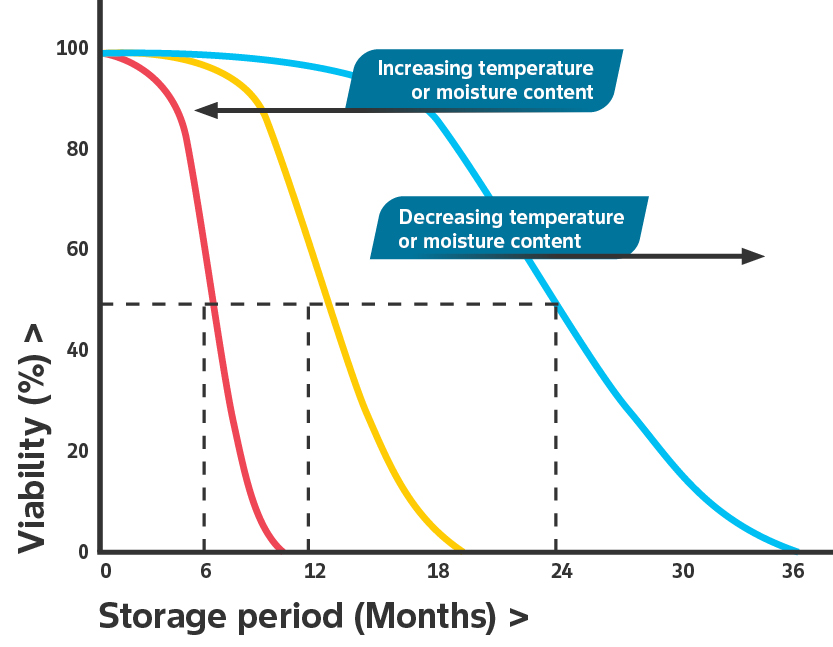Seed is a living organism and therefore it is very important to store it correctly. There are two rules that play a significant role in this regard:
Harrington's rule:
Seed longevity decreases by one-half for every 1% increase in moisture content or every 10˚F (6˚C) increase in temperature.
Bradford's metronome rule:
The “clock” starts running as soon as the seeds are mature and they have a total number of ticks before death. The rate at which the metronome ticks depends upon the temperature and moisture content.
Managingthe two key aspects of seed storage
When it comes to seed storage, there are two important aspects that must be taken into consideration when choosing a storage facility – temperature and moisture. Here are some useful tips in managing these two key aspects:
Changes in climatic conditions such as an increase in humidity resulting in a 1% increase in seed moisture or a 6 degrees Celsius increase in temperature in a storage facility may halve the shelf life (viability) of seed. In practical terms this means (as shown in the graphs below) you move from the blue line (24 months storage) to the yellow line (12 months storage).

- The recommendation is to keep seed stored in a dry place elevated from the floor such as on a wooden pallet. The elevation of the seed from the floor insulates the seed from the concrete floor and thus temperature fluctuations that may affect the seed are better managed.
- Keep minimum and maximum temperature fluctuations to a minimum. In other words – seed stored in a tin building where temperature fluctuations are more severe is not an ideal solution for storage of seeds. Insulated brick buildings or other insulated storage facilities where fluctuations in temperature are minimal are better facilities to store seed in.
- Seed should be stored away from direct sunlight such as windows and transparent roofs that are used for natural light.
- Do not store seeds in the same area where chemicals are stored. The seed storage room should be separated from other storage rooms and with access control. Sealing of doors and windows (e.g. with rubber) and access control assist with rodent control, potential temperature fluctuations and theft.
- Ensure that bags of seed are stacked in such a manner to ensure easy access. This will allow for effective fumigation against insects. When fumigating seed storage facilities, pesticides registered for seed pests should be used and strictly adhere to the instructions on the label of the registered pesticide. Insect control is vital in maintaining seed viability. Good housekeeping (no maize debris) practices are vital in keeping insect infestations at bay. Storage facilities should be inspected and monitored for any signs of insect activity and control measures should take place where insect activity is present. It would be useful to invest in an insect zapper for monitoring purposes. By observing the trapped insects or those on the floor below, you can keep track of what is happening in your seed storeroom.
Click here for more information on the different cultivars we have to offer, click here.